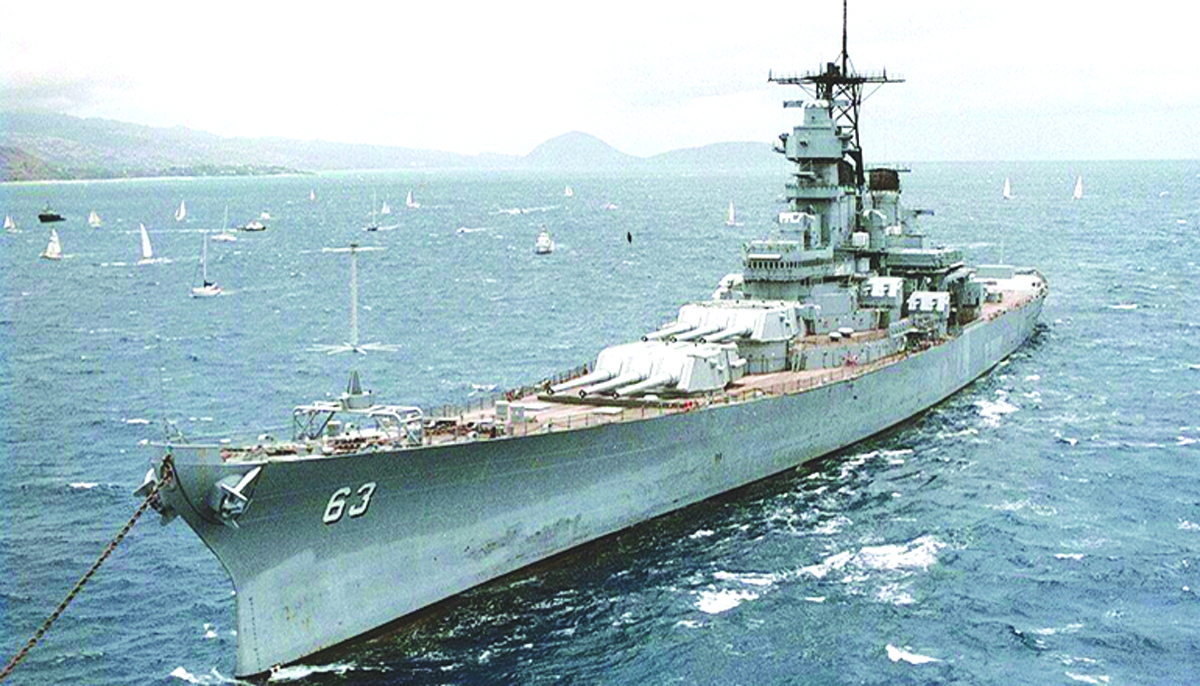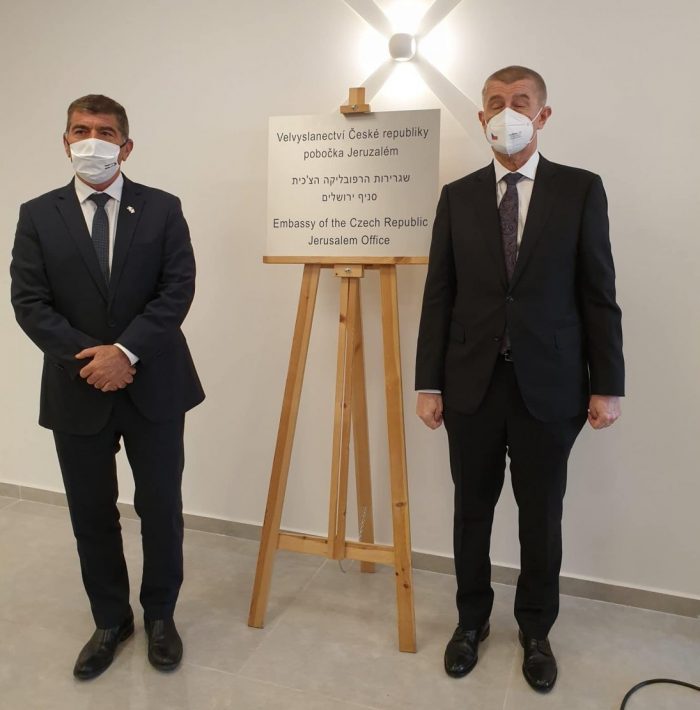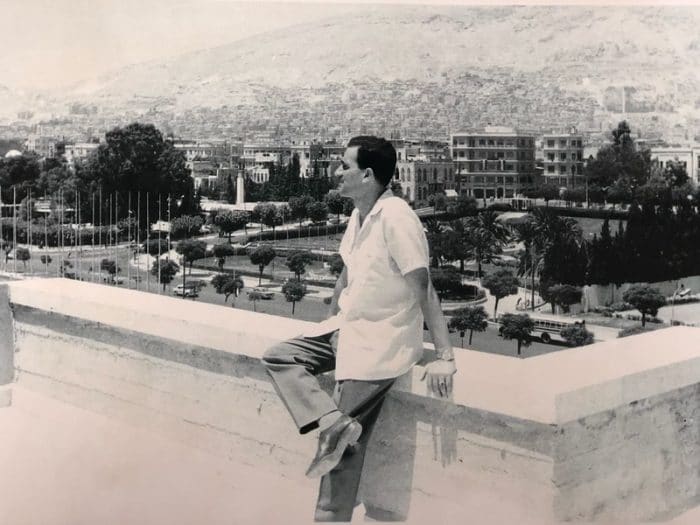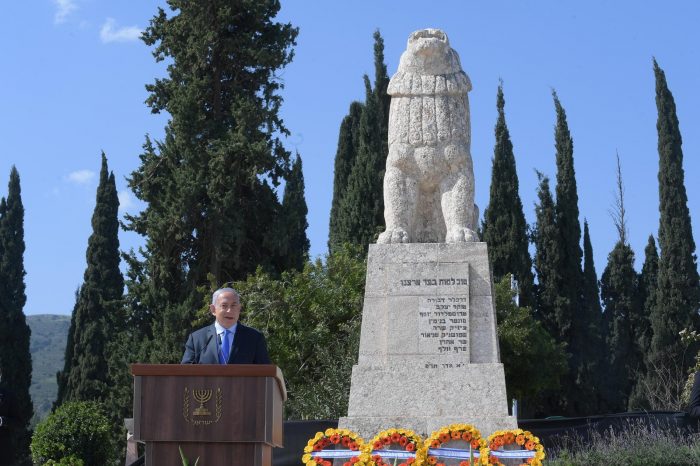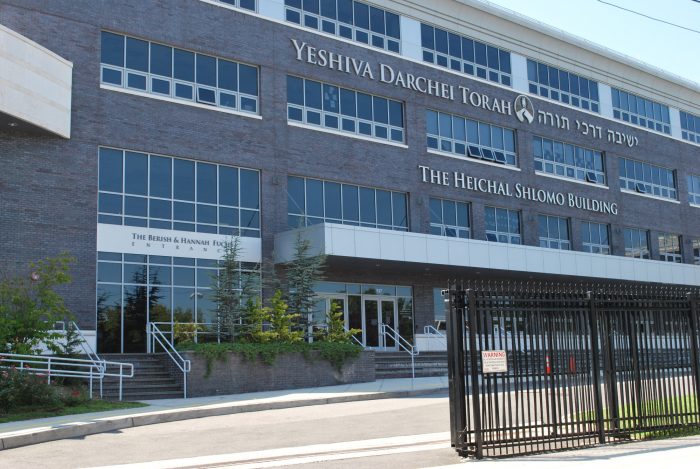By Avi Heiligman
After the surrender of Germany in May 1945, the attention of the Allied armies turned towards defeating Japan. American forces had pushed them back to the Japanese home islands with the capture of Iwo Jima and Okinawa. In August, B-29 Superfortress bombers dropped atomic bombs on the cities of Hiroshima and Nagasaki. On August 14, President Truman announced to the American public that he had received a message from Japan in which they accepted the terms of unconditional surrender put forth by the Potsdam Declaration. A battleship was chosen for the official signing of the surrender agreement. For the most part, battleships were a thing of the past by the end of World War II but the USS Missouri (BB-63) served with distinction for many years after the war and was even present during the 1991 Persian Gulf War.
Battleships are large armored warships outfitted with large caliber guns and were built during the 18th and 19th centuries. Other ships, like aircraft carriers and smaller fast ships like destroyers and submarines, eventually made the battleship obsolete by the end of World War II but they did play a significant role in the war effort. The Japanese realized that they would need to neutralize Allied battleships in order to conquer territory, and in December 1941, they sank or damaged all of the American battleships at Pearl Harbor.
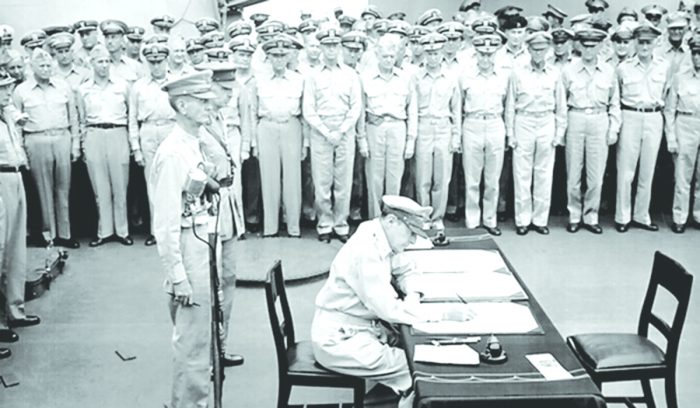
When it came to building battleships, the British, Americans and Japanese commissioned more than any other country. The Iowa-class battleships were intended to track down large, fast Japanese warships such as the Kongo-class battle-cruisers that were very active during the war. Four Iowa-class battleships were ordered between 1939 and 1940. The Missouri was the last to be launched in January 1944 after the Iowa, New Jersey and Wisconsin were completed. She had nine 16” guns in her main battery, twenty 5” guns, and over a hundred anti-aircraft guns on board.
Two-thousand-seven-hundred sailors and marines served on the Missouri during World War II. Her first assignment was to serve as a screening vessel for aircraft carriers that were launching strikes against Japan. She provided fire support during the invasion of Iwo Jima in February 1945. During March, she went with aircraft carriers as they went to the Japanese mainland for another raid. It was during these raids that the Missouri shot down four enemy planes headed for the American group. Then, with other battleships, she bombarded Okinawa in preparation for the upcoming landings.
On April 11, she was hit by a low-flying kamikaze suicide plane but suffered very little damage and no casualties. She then shot down a second suicide bomber headed for the task force. Six days later, the Missouri detected a Japanese submarine and relayed the coordinates to a hunter-killer light carrier group which in turn sank the I-56 submarine.
In other action off of Okinawa, she shot down five enemy planes, fought off sixteen air raids on her task group, and destroyed many shore installations in assisting the troops on shore. For the rest of the war, she assisted in bombarding the Japanese home islands and was off the coast of Japan when the atomic bomb was dropped on Nagasaki.
After the announcement that the Japanese were going to surrender, the Missouri steamed into Tokyo Bay on August 29. British Admiral Bruce Fraser was already on board to bestow an honor on Admiral “Bull” Halsey and more high-ranking officers boarded for the surrender ceremony on September 2.
Eleven Japanese officials were present for the surrender that was signed by the foreign minister Mamoru Shigemitsu and the Chief of the Army General Staff Yoshijiro Umezu. General Douglas MacArthur presided over the ceremony and began by stating, “It is my earnest hope –indeed the hope of all mankind – that from this solemn occasion a better world shall emerge out of the blood and carnage of the past, a world founded upon faith and understanding, a world dedicated to the dignity of man and the fulfillment of his most cherished wish for freedom, tolerance, and justice.”
He then accepted the surrender document and signed, as he was the Supreme Commander of the Allied Powers.
Representatives from nine Allied countries signed the document. These included: American Admiral Chester W. Nimitz, Chinese General Hsu Yung-chang for China, Admiral Fraser for the United Kingdom, Russian Lieutenant General Kuzma Derevyanko for the Soviet Union, Australian General Sir Thomas Blamey for Australia, Canadian Colonel Lawrence Moore Cosgrave for Canada, French General Philippe Leclerc, Lieutenant Admiral C. E. L. Helfrich for the Netherlands, and Air Vice-Marshal Leonard M. Isitt for New Zealand. The surrender documents were then taken to Washington, D.C., and presented to President Harry Truman before being put on display at the National Archives.
The entire proceedings took just 23 minutes, and the Missouri left Tokyo Bay the next day. She picked up passengers on Guam and was back at Pearl Harbor on September 20. A month later, she was in New York for Navy Day celebrations, and President Truman boarded the now-famous battleship after she fired a 21-gun salute. By December, she was in dry-dock for an overhaul. Over the next few years, she took part in many training exercises, goodwill tours, and celebrations. President Truman really liked the ship and kept it in the active fleet against the advice of his advisors.
In January 1950, the Missouri was the only battleship left in the U.S. Navy’s active fleet when she ran aground off the coast of Virginia. Soon she was refloated, repaired, and was ready for action when the Korean War broke out later that year. Throughout the war, she provided support for the U.N. troops on shore and a few times fired on Communist positions.
She left Korea in March 1951 and went back to the United States. A year later, she set out again for Korea for a second tour of duty during the war. Again, she bombarded coastal positions in support of ground troops. After the deployment, she went on more training exercises and in 1954 sailed to Western Europe with the three other battleships of her class. The other three ships had been recommissioned, and this was the only timed they sailed together. In 1955, the Missouri was deactivated and was placed in mothballs at Puget Sound Naval Yard.
Almost thirty years passed when, in 1984, the Missouri was taken out of the mothballs and reoutfitted, modernized, and recommissioned into the navy. All of her anti-aircraft weapons were removed and replaced with modern weapons like Tomahawk cruise missiles. New radar was installed as well as improved electronic controls. These upgrades took two years; the battleship was recommissioned in May 1986. She took an around-the-globe tour and in 1987 was in the Persian Gulf escorting oil tankers from Kuwait as part of Operation Earnest Will. In November 1990, she set off for the Persian Gulf again and took part in Operation Desert Storm. Over a five-day period, she fired a total of 28 Tomahawk cruise missiles. She then went north and fired her main guns at an Iraqi command bunker. She fired her guns several more times and was shot at twice – both missed. One sailor on the Missouri was wounded during a friendly fire incident with a frigate.
In 1992, the Missouri was decommissioned for the final time and is now a museum ship in Hawaii. She was the site where World War II formally ended. Her long and storied career is one that is to be remembered.
Categorised in: Forgotten Heroes

